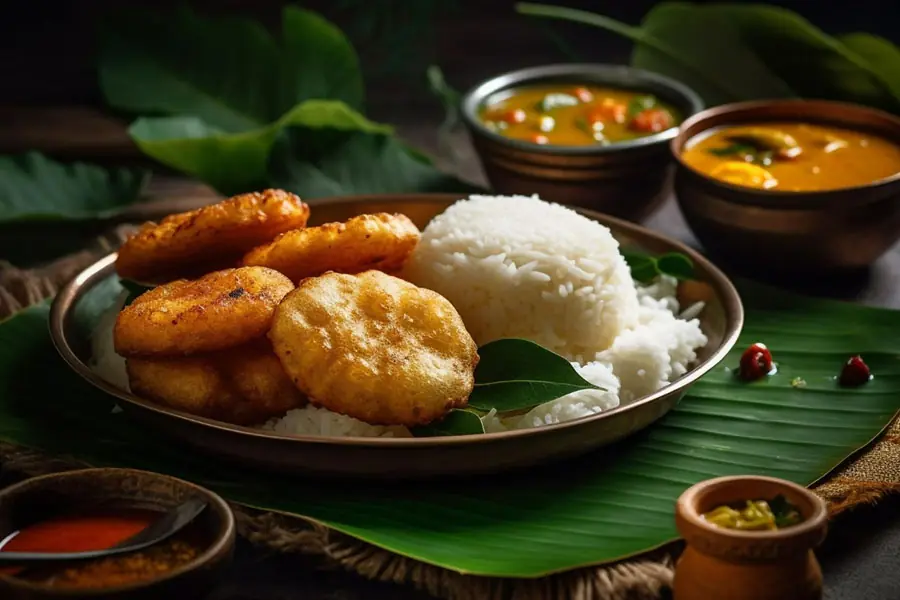Longevity Diet
The Longevity Diet: Secrets to living a healthy and long-lasting life
The longevity diet is simply eating what nature intended us to, thus ensuring a healthier and longer life.
Animals in the wild, eating their natural diet, live an average of ten times the number of years it takes them to reach maturity (Chimpanzees reach maturity by the time they’re five, and live to about fifty years, for instance).
Meanwhile, most humans’ lifespan is barely five times the number of years it takes to reach maturity.
The Longevity Diet: How long should we be living?
Steve Charter, in Eat More Raw: A guide for health and sustainability, cites Dr. Joel Wallach, who emphasizes the scientifically accepted view that the genetic potential for longevity in humans suggests we should live to around 120 to 140 years old.
Dr. Wallach lists a few more cases to further support this, including Russian Georgians who commonly live to 120, and the Armenians and Ebkanians, where living to 140 is not uncommon.
He cites one Armenian who, from his military records, is thought to have lived to 167 years old, and the Titicaca Indians of south-east Peru who lived to between 120-140 years old. There’s also the case of the Niger chief who died at 126 with all his teeth, and a Syrian in the Guinness Book of Records who fathered 9 children after 80 and went on to live to 133.
Put into context, the average age for Americans was 75.5 years old in 1994. For doctors, it was 58. Dr. Wallach suggests that these figures suggest that there is great value in treating yourself (through nutritional and lifestyle changes), rather than putting your health in the hands of doctors.
If you think about it logically, the reason there’s such a difference in our lifespan (compared to chimpanzees or those who manage to live to a ripe old age) is that we are not eating our natural diet.
In this article, I’ll discuss some of the longest-living tribes and what the commonalities are in terms of their diet and lifestyle, what I term the longevity diet.
“Bad men live that they may eat and drink, whereas good men eat and drink that they may live.”
– Socrates
The longevity diet: Diet of the longest-living cultures
John Robbins, in Healthy at 100: The Scientifically Proven Secrets of the World’s Healthiest and Longest-Lived Peoples, describes the lifestyles and dietary patterns of the long-lived cultures of the Abkhasia of Southern Russia, the Vicalbamba Indians of the Ecuadorian Andes and the Hunza of North Pakistan.
He found that the percentage of calories they obtained daily was between 69-73% from carbohydrates, 15-18% from fat, and 10-13% from protein.
Overall daily calories ranged between 1,700 -1,800, while the Abkhasia ate 90% plant foods and the Vilcabamba and Hunza ate 99% plant foods.
All three ate low amounts of salt, zero sugar or processed food, and had no incidence of obesity and other common diseases.
He also discussed the Okinawa, who, though eating a more animal-based diet, had a similar lifestyle.
I highly encourage you to read this book, or if you need a taste of what it’s about, read this review of Healthy at 100, which includes a preview of the fascinating first chapter.
Alternatively, check out this video where John Robbins talks about his book: Healthy at 100.
Now let’s analyze each of these centenarian-rich cultures and see what else they have in common.
The Longevity Diet: The Abkhasia
Once known as “the longevity capital of the world”, Abkhasia’s people live in the Caucasus Mountains of southern Russia.
The Abkhasia has many centenarians, all in remarkable health, attests Dr. Leaf, professor of clinical medicine at Harvard University and Chief of Medical Services at Massachusetts General Hospital, who undertook a study with National Geographic to verify their claims.
The Abkhasia primarily eat fresh fruit and vegetables (picked fresh and eaten near immediately) as well as nuts and some whole grains. The Abkhasia consume very few animal products, which include a fermented beverage called matzoni, made from cow, goat or sheep’s milk, and more rarely, fresh meat, with the fat removed.
The Longevity Diet: The Vilcabamba
A small village in Southern Ecuador located in an elevated valley, Vilcabamba is extremely inaccessible. This remoteness ensures that the Vilcabamba are highly active; hiking regularly, they work in the fields cultivating their land and harvesting fruit and vegetables, which they eat freshly picked.
Though they eat some cooked (whole) grains, all their vegetables, nuts, and seeds are raw. There are almost no animal products to be found in their diet and no packaged or pre-prepared food.
There is a strong sense of community amongst Vilcabamba; laughter and simple pleasure in every moment of their lives are enriched with a spiritual outlook. The Vilcabamba look forward to their elderly years, as their community values and respects old age.
This leads to some Vilcabamba’s exaggerating their age, which causes confusion among researchers who aim to verify their claims. However, regardless of their exact age, there can be no doubt that the Vilcabamba live longer, happier, more vigorous, and healthy lives than most Westerners, with some living up to 110 and beyond, active to the last.
The video below shows 99-year-old Agustin Jaramillo, dancing with tourists on the main plaza of Vilcabamba. Though Vicalbamba has changed much with time, it’s clear its elders retain their zest for life.
The Longevity Diet: The Hunza
The Hunza live a simple life in a fertile valley high up in the mountains, isolated from the rest of the world. The rough terrain of their mountainous abode ensures they walk up and down rigid peaks, keeping them fit and active.
They also work hard at cultivating their land, which provides them with enough high-quality produce to thrive into their old age.
British physician, Sir Robert McCarrison, stated that the Hunza were “unsurpassed in the perfection of physique and in freedom from disease in general. The span of life is extraordinarily long… During the seven years, I spent in their midst…I never saw a case of asthenic dyspepsia, gastric or duodenal ulcer, appendicitis, mucous colitis, or cancer.”
The Hunza eat primarily fresh fruit for most of the year and keep large stores of dried fruit to last throughout the winter. In the summer, their diet is as much as 80% raw, while in the winter they eat cooked beans, corn, root vegetables, and squash as well as sprouts.
Due to a scarcity of wood in their remote mountain valley, the Hunza avoid cooking as much as possible. Though they do eat a small amount of meat and dairy on rare occasions, it’s an exception, as they have no grazing pastures for animals.
Much like the Vicalbamba, and Abkhasia, the Hunzakuts have a strong sense of community, where everyone is valued for their contribution.
The below video depicts the Hunza’s living out their simple lives surrounded by sublime scenery.
it’s perhaps no surprise that they have a strong connection with nature, and are very spiritual.
Boisterous, enthusiastic, and with an almost child-like appreciation for their simple lives, the Hunza certainly have a lot to teach our supposedly evolved society.
The Longevity Diet: The Okinawa
Another famous long-living tribe is that of Okinawa, who energetically live out their long lives on islands in Japan. Known as “the land of the immortals”, Okinawa boasts 900 people aged 100 or over, the highest number of verified centenarians in the world.
Those who live there eat most of their food lightly steamed. While they do eat small amounts of animal products, they consume them mostly raw, such as fresh fish. They eat more tofu and soya products than any other population in the world, and a vast amount of different vegetables and fruit.
The Okinawans are physically active and have a stress-minimizing spiritual outlook. They live mostly in villages, allowing for a relaxed and rural way of life, with a strong sense of community, sharing the joys and hardships of their lives.
They have a deep respect for age, with elders playing an important role in the community.
The video below depicts Okinawa’s seniors (from 90 years upwards) engaging in various activities. 90-year-old Tune Ganaha climbs trees to pick fruit, while other elders actively run, dance, and do karate.
Though I can write another page on the Okinawans alone, I encourage you to visit the Okinawa Centenarian study for further information.
The Longevity Diet: Lessons from the world’s longest-living societies
By now it should be clear that the longevity diet includes some common denominators. These are:
- Diet includes whole mostly vegan, organic food with minimal animal products and fat.
- Vitamin D and exercise
- Strong community values
- Spirituality and a sense of purpose
The best six doctors anywhere
And no one can deny it
Are sunshine, water, rest, and air
Exercise and diet.
These six will gladly you attend
If only you are willing
Your mind they’ll ease
With your will they’ll mend
And charge you not a shilling.
~Nursery rhyme quoted by Wayne Fields, What the River Knows, 1990
Longevity Diet lesson 1: Whole, organic fresh food
One of the most striking characteristics of the longevity diet is that these long-living societies eat mostly vegan, wholly organic, and freshly-picked food.
Though they include some animal products, they depend on locally-farmed, organic plant-based food for their survival (and apparent health).
The longevity diet is high in natural carbohydrates, low in protein and fat, and includes minimal amounts of fermented foods. Because it is largely raw, it contains lots of fiber and is replete with nutrients and enzymes you get from fresh, raw food.
What’s more, there’s no such thing as processed food, pre-packaged or pre-cooked microwave meals, ever. They farm organically, using no pesticides, chemicals, or fertilizers, and of course, by not buying pre-made food you exclude GM foods, additives, colorings, preservatives, and high salt consumption.
It’s also the diet that does the most to save the earth because there’s no packaging (thus no waste), no fossil fuels used for transportation and most often it’s eaten in its pure natural form (thus saving energy used on cooking).
To learn the valuable lesson these cultures teach us. If you want to live a long and healthy life, cut out the processed junk and eat as naturally as possible. Cut down on your meat and dairy consumption or go vegan, and ultimately try eating more (or 100%) raw food.
“The wise man should consider that health is the greatest of human blessings. Let food be your medicine.”
– Hippocrates
Longevity Diet lesson 2: Vitamin D and exercise
“I think you might dispense with half your doctors if you would only consult Dr. Sun more”.
-Henry Ward Beecher
Each of these cultures has another thing in common and that is exercise and sunlight. Because they’re often outdoors, cultivating, harvesting, and hiking, they are getting ample Vitamin D, essential for health and energy.
The Vilcabamba, Abkhasia, Hunza, and Okinawa also share a fairly heavy workload (by modern standards). As a result, they are always fit, athletic, trim, and muscular, something we all aspire to.
So try and exercise consistently every day and if possible do so outdoors. Getting at least 20 minutes of sunlight every day is indispensable for health.
“Those who do not find time for exercise will have to find time for illness”.
– Edward Smith-Stanley
Longevity Diet lesson 3: Strong community values
These tribes share a connection to nature and to the environment. They work closely with the land and frequently interact with each other.
They have a strong sense of community and value the contributions of each and every person, no matter how young or old. Socially active, they form close bonds with neighbors, acquaintances, and family members.
Our Western society is very different. We stick to our own, keep to ourselves, and most of us don’t even know (or acknowledge) our neighbors.
Perhaps it’s time to question what we’re missing out on by living a typical urban lifestyle and embracing a stronger sense of community, even if just by joining some common-interest groups.
Health is a state of complete physical, mental and social well-being, and not merely the absence of disease or infirmity.
– World Health Organization
The Longevity Diet lesson 4: Spirituality and a sense of purpose
Everyone in these communities is purposefully engaged, even at old age. Whether it be farming, healing (medicinal/herbal), spiritual advancement, building, collecting water, or harvesting food, everyone has a role to play that enriches the community.
There is no such thing as greed or self-interest. What’s more, no matter what religion or spiritual practice they follow, they believe in something greater than themselves.
They connect with the spiritual plane as well as the physical and this gives them faith to endure any hardships they may suffer, without complaint. They have a positive outlook and enjoy their simple lives, surrounding each other with love and laughter.
The Longevity Diet: Conclusions
It’s clear that the diet and lifestyle of these cultures make them immune to the top killers in the West: heart disease, cancer, stroke, chronic pulmonary disease, pneumonia/flu, diabetes, liver disease/cirrhosis, suicide, and Alzheimer’s.
What’s more these groups’ healthful propensity for longevity isn’t just a win at the genetic lottery, as demonstrated by the Okinawans who grew up in other countries. During the 20th century, 100,000 Okinawans migrated to Brazil, where they adopted the typical (meat-based) Brazilian diet.
A study called the Impact of diet on the cardiovascular risk profile of Japanese immigrants living in Brazil revealed that Okinawan’s average lifespan decreased by 17 years when exposed to a ‘Western’ lifestyle. As their youth adopted a Western diet (replete with fast food), obesity levels, cardiovascular disease, and premature deaths reached record highs in Japan.
So if you really want to achieve long-lasting health and virality, try and incorporate some of the lessons of the longevity diet into your lifestyle. For your efforts, you’ll achieve the greatest reward – a life filled with joy, happiness, and abundant health right up to your old age.
Click one of the following links and get to know more about health and wellness:
Raw Vegan Diet: A raw vegan diet is not a diet; it’s a lifestyle. A lifestyle that is filled with fabulous health, joy, and an abundance of fruit and vegetables. Find out what a raw vegan diet is and how to start your journey to raw veganism.
Raw Food Health: Get passionate about raw food health and nutrition, learn how cooking food destroys its nutrients and how illness and disease become a thing of the past with a raw food lifestyle.
Benefits of a Raw Food Diet: Get inspired! Learn what the top 15 raw food diet benefits really are. If you’re looking for clearer skin, more energy, motivation and stamina, better sleep, increased happiness, and connection with nature, among others, look no further than the raw food diet.
Raw Food Weight Loss: Imagine feeling full and satisfied all the time, and dropping weight! Learn how to eat right, be inspired by raw food diet weight loss success stories, and get the top weight loss tips and guides.
Save the earth with a raw food diet: Adopt a raw food diet and reduce your carbon and water footprint instantly, leading to a more sustainable way of living that will ultimately save the earth.
The human omnivore or carnivore myth: Find out whether there is such a thing as a human omnivore or carnivore in this article. Explore the evolution of man, the anatomical differences between omnivores, carnivores, and frugivores, and make up your own mind.
Raw Food Travel Tips: At last, Raw Food Travel Tips allows you to travel as a raw vegan without worrying that you’re going to fall off the wagon. Find out the best strategies for remaining committed to raw food, anytime, anywhere.



